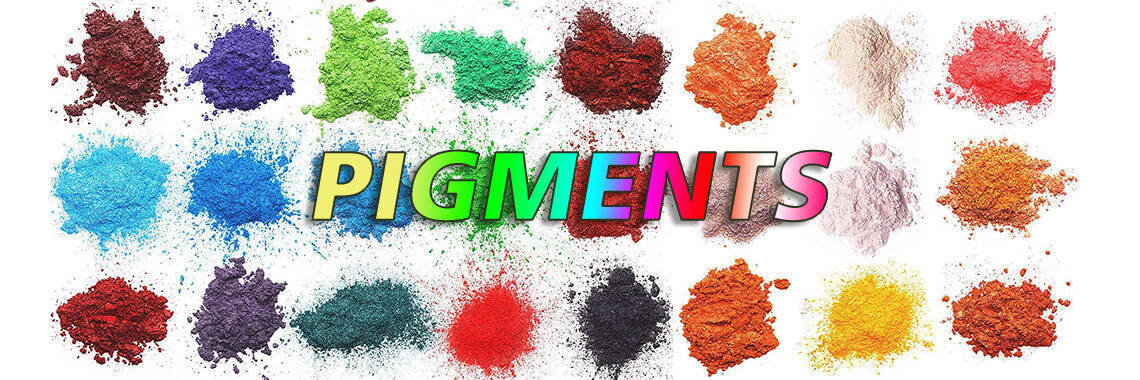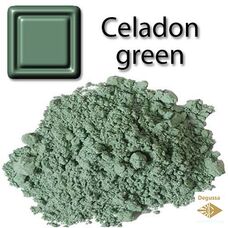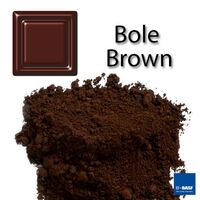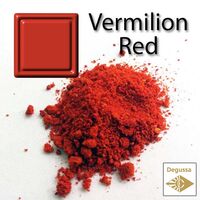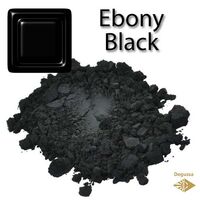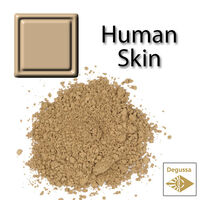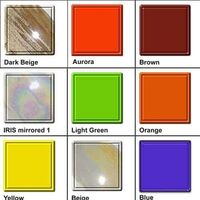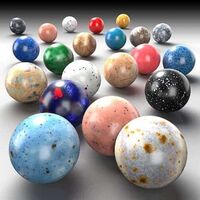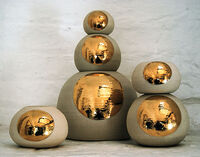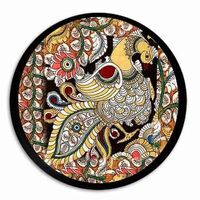CELADON GREEN Pigment stain expands the potter’s palette with infinite colors possibilities. How it can be applied onto earthenware, greenware or bisque?
CELADON GREEN color powder mixed with water provides the cheapest and the most usual way of applying underglaze decoration. Glaze and body ceramic stains are normally used for the preparation of colored glazes or colored slips. The cerulean pigment is suitable for both operations. You can use effect glazes in any combination with this pigment.
All ceramic pigments are intermixable so why not get creative and experiment by missing your own completely fresh color. During the firing process, the colors fuse extra vigorously creating purity, intensity, and brilliance. The colors are stronger, therefore, significantly less percentage is needed to create vivid colors making them excessively cost-effective.
Celadon is a type of ceramic glaze known for its distinctive green color. It originated in China and has been produced for centuries using specific techniques. Here's some information about ceramic green celadon:
Glaze Composition: Celadon glazes typically contain iron oxide as the coloring agent, which imparts the characteristic green color. The iron oxide reacts with the kiln atmosphere during firing to create a range of green shades, from pale greens to deeper, bluish-green tones.
Translucency: One of the notable characteristics of celadon glazes is their semi-translucent or translucent appearance. When applied thinly and fired at high temperatures, the glaze allows light to pass through, creating a beautiful, ethereal quality.
Crackle Effect: Celadon glazes often exhibit a crackle effect, which is highly valued and sought after. These fine cracks in the glaze occur due to differences in the contraction rates between the glaze and the clay body during cooling. The crackle effect adds visual interest and depth to the ceramic piece.
Traditional Techniques: Celadon ceramics are created using various traditional techniques, such as throwing on a potter's wheel or hand-building methods like coiling or slab construction. The glaze is carefully applied to the ceramic piece, and the excess glaze is wiped away, leaving a thin, even layer.
Firing: Celadon ceramics are typically fired in reduction atmospheres, where the kiln lacks sufficient oxygen. This oxygen-deprived environment affects the iron oxide in the glaze, resulting in the green coloration. The firing temperature and duration are crucial factors in achieving the desired celadon effect.
Cultural Significance: Celadon ceramics hold cultural significance in East Asian countries, particularly in China and Korea. The creation of celadon glazes requires great skill and knowledge passed down through generations of potters. These ceramics have been highly prized and sought after, both for their aesthetic beauty and historical value.
Celadon glazes can vary in their specific shades of green, ranging from pale jade-like greens to deeper, more vibrant hues. The nuanced variations in color and the crackled surface contribute to the allure of celadon ceramics, making them highly appreciated by collectors and enthusiasts worldwide.
How to use ceramic stains:
Celadon Green is powder and should be mixed with a suitable medium (water) in the approximate proportions of 2 parts color to 1 part medium. These can be diluted further with water for brush application, immersion or flooding. After good drying, the products should be glazed with transparent gloss or mat glaze and fire in the kiln.
When using pigments in glazes, usually in concentrations of 1–10%, a little more care must be taken because some pigment systems react with materials in a glaze.
We (Ceramic Glazes) recommend mixing the CELADON GREEN with Bumblebee yellow or Tiger orange Ceramic pigments
Color code: B5CCB8
Quantity: 10 g. (0,35 oz.)
Firing temperature: 890°C - 1240°C (1640°F - 2264°F) (up to Orton Cone 7)
Lead content: lead-free, 0%
CELADON GREEN Pigment stain - Green Ceramics
- Brand: Degussa
- Product Code: pigment - Celadon Green - SV06
- SKU: SV06
- Availability: 200
-
0.99€
Available Options
Related Products
BOLE BROWN - Ceramic Pigment Degussa
BOLE BROWN color powder mixed with water provides the cheapest and the most usual way of applying underglaze decora..
0.79€ 0.99€
VERMILION RED - Cinnabar Ceramic Pigments Stains High Temperature Porcelain up to 1300 centigrade
VERMILION RED or CINNABAR is the highest quality color. Mixed with water provides the cheapest and the most usual way of..
2.99€
EBONY BLACK - Ceramic Pigments and Stains Degussa
Color code: 232323Firing temperature: 890-1100°C (1640-2014°F) Lead content: lead-free, 0%..
0.99€
BODY SKIN COLOR - Ceramic Pigment Stain Degussa Human Colour Underglaze
Many people want to know, what Human Skin Color is, how to paint pottery arctic colors:Prepared ceramic pigments, ..
0.99€
Tags: pigment

